Welcome to yet another enchanting world of Indian handlooms, where ancient traditions blend with artistic mastery to craft breathtaking textiles. Among India’s cherished weaving heritage, the Baluchari saree shines as a symbol of unparalleled skill and the art of storytelling woven into its fabric.
In Dreaming Loud’s “The Handlooms of India” series, we humbly endeavor to explore, embrace, and share the captivating stories behind India’s rich handloom weaves.
It’s been a recent trend to embellish your special occasion clothing with memories embedded into the saree using embroidery, Zardosi, Aari, or some work. It is known to everyone that the couple is not together now, but Samantha’s engagement saree was definitely the talk of the town, with all the beautiful memories embroidered on the saree. What if we told you this is actually a real OG trend where stories are weaved on the sarees? We are going to discuss a unique type of handloom Baluchari here.
You might also like these related posts:
- Handlooms of India Part#3 – Kora Silk Saree
- Handlooms of India Part#2 – Bobilli Handloom Cotton Saree
- Handlooms of India Part #1-Tissue Banarasi Katan Silk Saree
- Indo-Western Outfit with Telia Rumal Blouse
- 2022 Navratri Outfits
Unveiling the Regal Charm of Baluchari Saree from West Bengal
Where is Baluchari from?
Baluchari is taken from the name of a village where the weave originated. Baluchari is a small village on the banks of Bhageerathi in the Murshidabad district of West Bengal. The weaving setup was later moved to Bishnupur when natural calamities struck Baluchari village.
What is the specialty of Baluchari?
Baluchari involves weaving history on the saree, with bright colors and intricate weaving of figures and non-figures using pure silk thread. These sarees have stories and characters from the Ramayana and Mahabharata and depict the Bhagavad Gita.
Types of Baluchari
Baluchari is a beautiful piece of art that deserves a place in everyone’s wardrobe. Depending on the thread used, Baluchari can be of different types.
Baluchari: Classic Baluchari uses resham threads of a single color in the weaving.
Baluchari Meenakari: Meenakari Baluchari uses resham thread in multiple colors.
Swarnachari: Swarnachari has golden or silver zari weaving. Swarnachari can be mixed with meenakari sometimes.
Baluchari Weaving Process
The process begins with the selection of Pure Bishnuput Katan Silk which is silk marked by Govt of India. Yarn is boiled in a soda and soap solution to make it soft in preparation for weaving. Then, according to the sari, the yarn is dyed in an acid color. The yarn is stretched to make it crisp. Here you can see a video of a spinning wheel making a small roll of silk used in weaving.
Motif designs are drawn on graph paper, and coloring and punching are done using these cards. Later, cards are sewed in order and fixed in a jacquard machine. It takes 5-7 days to make a Baluchari saree.
The Art
Below are a few pictures of the beautiful loom from weavers at Baluchari Mart.
The demon Ravana attempted to abduct the goddess Sita, and during this critical moment, Jatayu, an old and wise bird, bravely intervened to rescue her. Jatayu fiercely fought with Ravana, but due to his advanced age, he was eventually overpowered by the demon. Ravana clipped Jatayu’s wings, causing him to fall to the earth. This event marks a significant part of the story of Sita’s abduction from the Ramayana
Damned to be turned into stone by her husband, Sage Gautama, Ahalya was freed from the curse after Lord Ram’s foot brushed against her stone-formed body.
During the epic battle of Kurukshetra in the Mahabharata, Krishna launched a wheel at Bhishma.
The above artwork on the saree depicts a scene from Mahabharata when Karna and Arjuna were engaged in a fierce battle. Karna tried to move forward, but his chariot wheel got stuck in the mud due to a curse from the goddess Earth. Unfortunately, at that crucial moment, Karna forgot the incantations to use his powerful weapon, the Brahmastra, because of a curse given to him by his guru Parashurama.
Dancing Apsara with flowers and gurukul education in the Ramayana
Dancing Apsara and Abhimanyu’s wedding
Meet the Weavers
Baluchari Mart is a group of weavers led by the Mandal family located in Bishnupur. They sell authentic products at weavers’ prices.
We would like to thank Mr. Avijit Mandal for providing us with the details of weaving, pictures of weavers, and Baluchari sarees.
Where to Buy Baluchari and Swarnachari Sarees?
You can buy them from BaluchariMart. They are Baluchari and Swarnachari weavers from Bishnupur, West Bengal. They also ship internationally with additional shipping charges.
What is the Price Range of Baluchari and Swarnachari Sarees?
Pricing provided by the Balucharimart Weavers
- Baluchari Sarees without Meenakari – 7500/- to 8500/- (in rupees)
- Meenakari Baluchari Saree or Swarnachari Saree – 8900/- to 9500/-
- All-over Baluchari/Swarnachari- 11800/- to 12500/-
- Revival Baluchari Saree- 15500/- to 25000/-

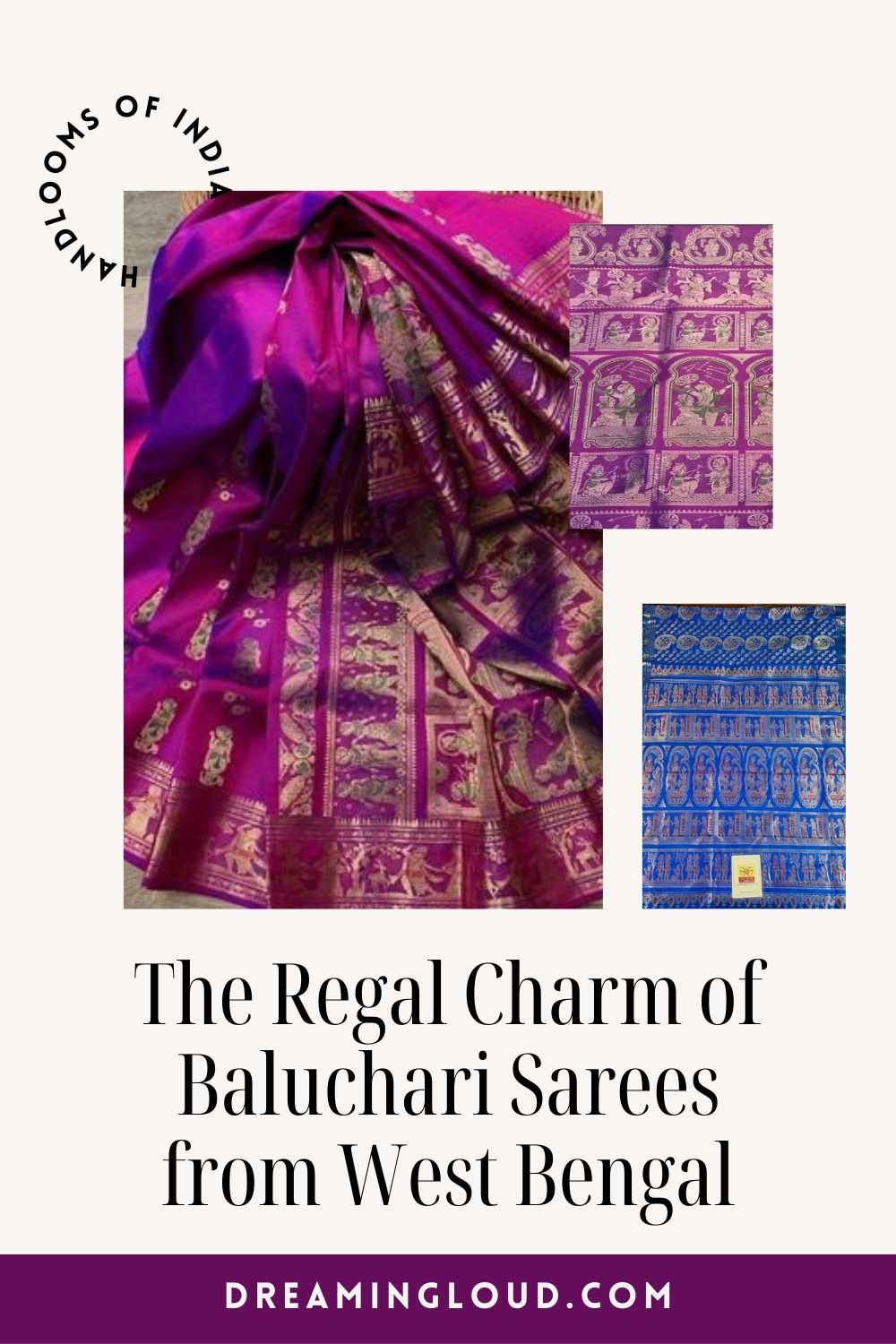
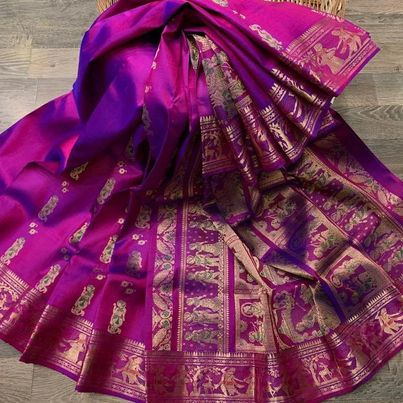
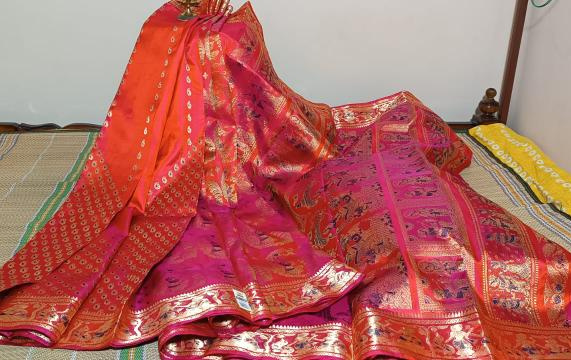
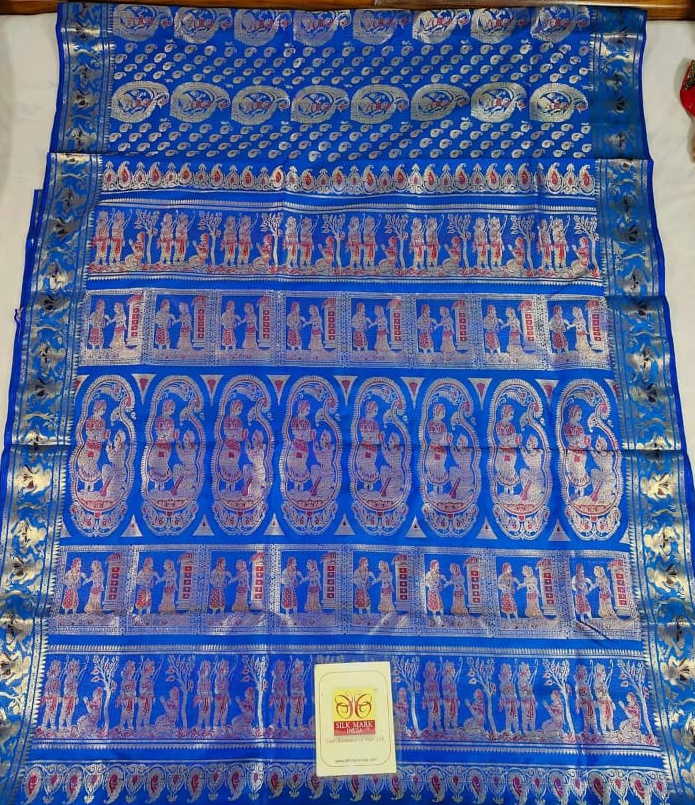
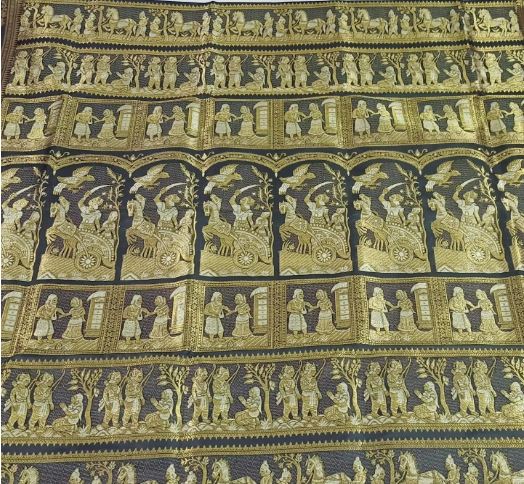

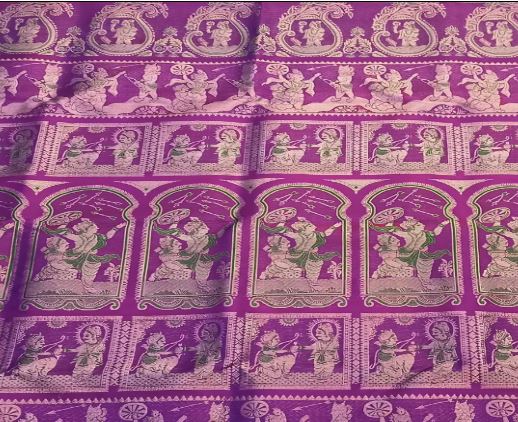


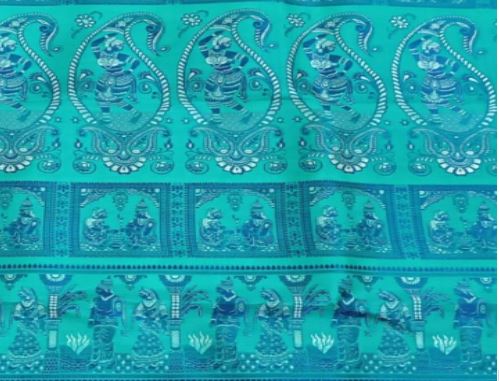
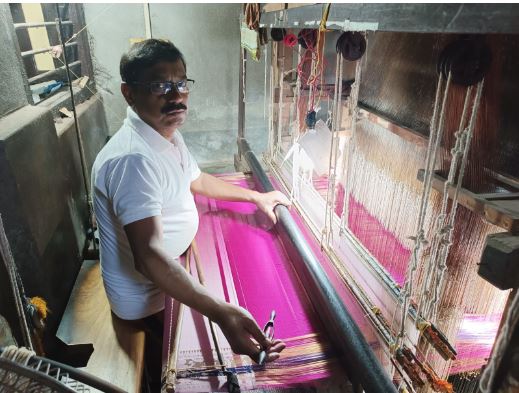






0 Comments